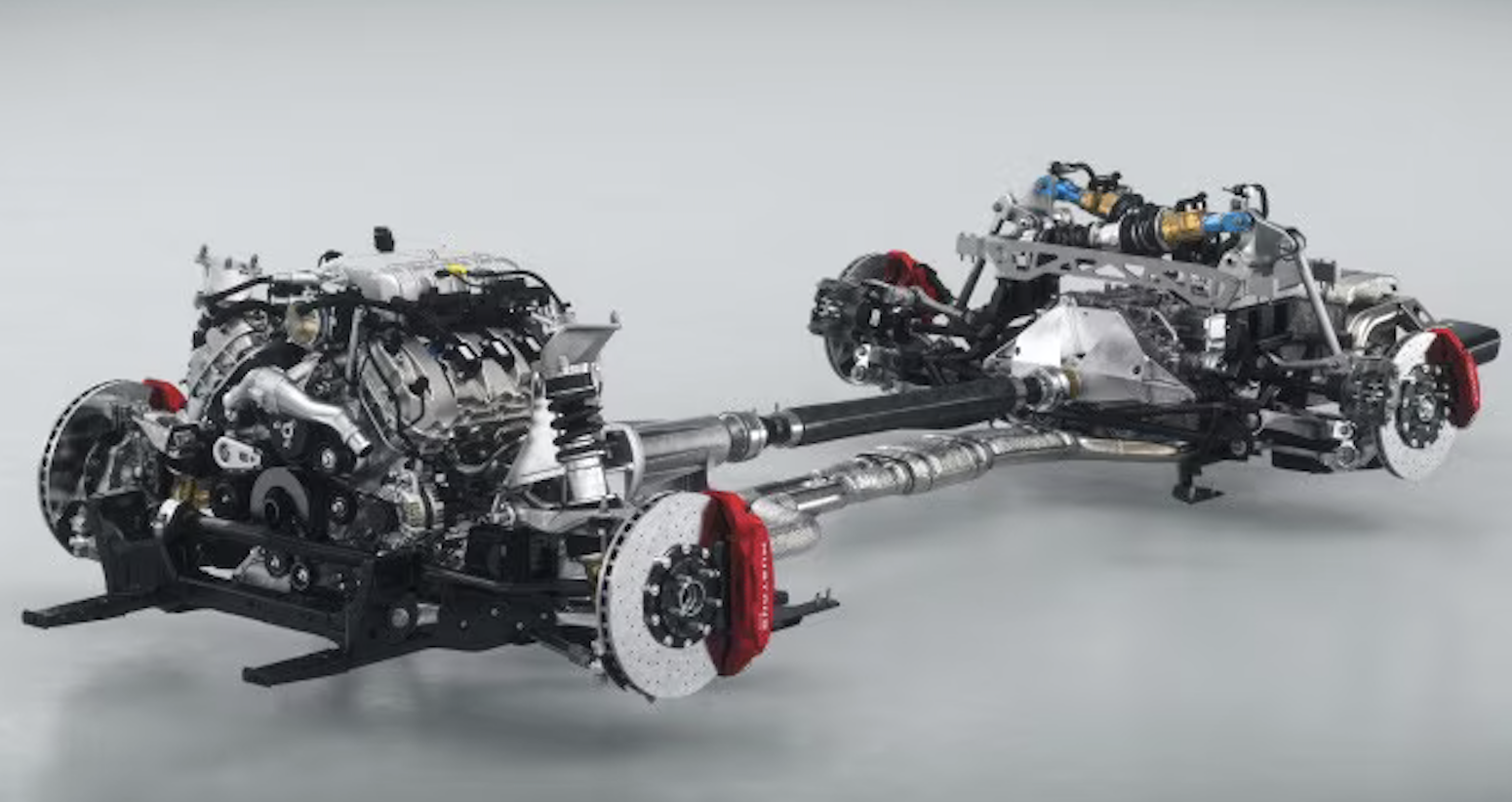I’m in a shuttle heading from a Palm Springs hotel to Thermal, California, to drive the 800- horsepower Ford Mustang GTD around a track, and I’ll be honest: I’m not going to be setting amazing lap times. Driving fast isn’t my expertise (though I enjoy it), but nerding out with engineers is. So tell me: What do you want to know about the Ford Mustang GTD?
There have already been plenty of “hot shoes” giving insight into the Ford Mustang GTD’s handling, and while I’ll do the same, there’s not a whole lot I’ll be able to add to what all these much-better drivers have to say. That’s just as well, though, because I’m not at this Ford Mustang GTD media event to tell the same story as everyone else; we already know the thing is a brute on the track, but what I want to know is more of the behind-the-scenes engineering stuff.
And to give me some ideas on what to ask the development team, I come to you, dear nerdy readers. What do you want to know about the Ford Mustang GTD’s engineering?

This is a great opportunity to get answers directly from some of the best engineers on earth — at both Ford and Multimatic, the Canadian company that co-developed this racecar-for-the-road of a Mustang. The body is carbon fiber (with some metal bits here and there), the engine is a supercharged 5.2-liter V8, and out back is an 8-speed dual clutch transaxle.

I love that ducted cooling module up front; you can bet I’ll be digging into that and the rest of the cooling system. The aero and cooling story (two very related areas, which is why at Chrysler the department is actually called AeroThermal) looks very interesting.


Anyway, drop your questions in the comments. I’m sure there are some cool tech stories the world hasn’t been told yet about the GTD.









How tall of a speed bump can it crawl over without scraping? There are some in Boston that my friend’s S4 can’t clear without making terrible noises.
Will it baby?
You’re going to have to take over the ‘will it baby’ reviews David, now that Otto is bigger than his dad.
Serious questions? You could ask the engineers how much of the GTD they think might trickle down to ‘normal’ Mustangs.
Hey David, when can we get your view on the Navigator? 🙂
What type of track was in consideration when balancing competing performance characteristics? Is there a track and rule set where it would be competitive with other “road legal” track cars within 20% +/- of its price?
How much track adjustability does it have out of the box? Eg tow/camber/caster, etc? What special prep does it need for track duty? I also suppose for the price and what it is, I could just go out and get a C8 ZR1 or ZR1X, which if I had that cash and was spending that and that’s where my $ would go…
How is the Mustang GTD’s production and assembly process affected by changes in the factory cafeteria menu lineup?